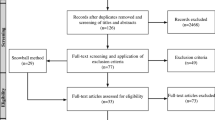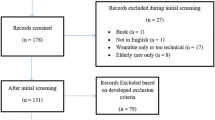Abstract
In the last decades, researches in the fields of Ambient Assisted Living and Smart Home have adopted technological paradigms to provide inhabitants with tailored solutions able to help them in their daily life, enable energy savings and monitor safety. Within this context, this paper introduces DOMUS, a Domestic Ontology Managed Ubiquitous System aimed at enabling the Smart Home paradigm and supporting dwellers characterized by frailty in autonomous living, a condition affecting elderlies in both physical and cognitive ways. DOMUS leverages ontological modelling of many domains of knowledge to customize indoor comfort management and to assist the dwellers in some of their Activities of Daily Living. The presented system exploits the semantic modeling of inhabitant’s health-related concepts to trigger the actuation of indoor comfort metrics inside the domestic environment. DOMUS’s complexity is hidden to the dwellers, who can interact with the system via an adaptive ubiquitous interface—the Home Interactive Controller (HIC). In this work, DOMUS’s architecture and its ontological framework are described in detail. Also, the functionalities provided via HIC and dedicated to the inhabitants are presented, focusing on customization of comfort and assistance in the process of meal preparation. Preliminary tests concerning the inferences produced by the ontologies, the evaluation of the usability of the system and its acceptance from target users are also presented: the first results highlight a good level of usability of DOMUS through the HIC, while its level of acceptance is encouraging and suggests some improvements.











Similar content being viewed by others
References
Alam MR, Reaz MBI, Ali MAM (2012) A review of smart homes—past, present, and future. IEEE Trans Syst Man Cybern Part C (Appl Rev) 42:1190–1203
Alliance Z (2019) http://www.zigbee.org. Accessed 24 Apr 2020
Al-Osta M, Bali A, Gherbi A (2019) Event driven and semantic based approach for data processing on IoT gateway devices. J Ambient Intell Humaniz Comput 10(2):4663–4678
Antoniou G, Van Harmelen F (2004) Web ontology language: Owl. In: Handbook on ontologies. Springer, pp 67–92
Arrieta AB, Díaz-Rodríguez N, Del Ser J et al (2020) Explainable Artificial Intelligence (XAI): concepts, taxonomies, opportunities and challenges toward responsible AI. Inf Fusion 58:82–115
Artaza-Artabe I, Sáez-López P, Sánchez-Hernández N, Fernández-Gutierrez N, Malafarina V (2016) The relationship between nutrition and frailty: effects of protein intake, nutritional supplementation, vitamin D and exercise on muscle metabolism in the elderly. A systematic review. Maturitas 93:89–99
Bennett J, Rokas O, Chen L (2017) Healthcare in the smart home: a study of past, present and future. Sustainability 9(5):840
Brooke J (1996) SUS-A quick and dirty usability scale. Usability Eval Ind 189:4–7
Chen L, Shadbolt N, Tao F, Cox SJ, Keane A, Goble C, Roberts A, Smart P (2002) Engineering knowledge for engineering grid applications. In: The Web and the Grid: from e-science to e-business. EuroWeb 2002 Conference, pp. 12–24
Chen L, Shadbolt NR, Goble CA (2006) A semantic web-based approach to knowledge management for grid applications. IEEE Trans Knowl Data Eng 19(2):283–296
Chen L, Nugent C, Mulvenna M, Finlay D, Hong X (2009a) Semantic smart homes: towards knowledge rich assisted living environments. In: Intelligent patient management. Springer, Berlin, pp 279–296
Chen L, Nugent C, Al-Bashrawi A (2009b) Semantic data management for situation-aware assistance in ambient assisted living. In: Proceedings of the 11th international conference on information integration and web-based applications & services, pp 298–305
Clegg A, Young J, Iliffe S et al (2013) Frailty in elderly people. Lancet 381:752–762
Compton M, Barnaghi P, Bermudez L et al (2012) The SSN ontology of the W3C semantic sensor network incubator group. Web Semant Sci Serv Agents World Wide Web 17:25–32
Daniele L, Hartog F den, Roes J (2015) Created in close interaction with the industry: the smart appliances reference (SAREF) ontology. In: International workshop formal ontologies meet industries. Springer, pp 100–112
Decree 412 (1993) of the President of the Italian Republic http://www.gazzettaufficiale.it/eli/id/1993/10/14/093G0451/sg. Accessed 21 Jan 2020
Demiris G, Hensel BK, Skubic M, Rantz M (2008) Senior residents’ perceived need of and preferences for smart home sensor technologies. Int J Technol Assess Health Care 24:120–124
EN 12464-1(2002) Light and Lighting-Lighting of work places, Part 1: indoor work places. Comité Européen de Normalisation
Fried LP, Tangen CM, Walston J et al (2001) Frailty in older adults: evidence for a phenotype. J Gerontol A Biol Sci Med Sci 56:M146–M157
Future Home for Future Communities project (2019) http://www.fhffc.it. Accessed 21 Jan 2020
Graves M, Constabaris A, Brickley D (2007) Foaf: connecting people on the semantic web. Cat Classif Quart 43:191–202
Gruber TR (1995) Toward principles for the design of ontologies used for knowledge sharing. Int J Hum Comput Stud 43:907–928
Horrocks I, Patel-Schneider PF, Boley H, et al (2004) SWRL: a semantic web rule language combining OWL and RuleML. W3C Member submission 21
ICF Ontology (2012) https://www.bioportal.bioontology.org/ontologies/ICF. Accessed 21 Jan 2020
Janowicz K, Haller A, Cox SJ, Le Phuoc D, Lefrançois M (2019) SOSA: A lightweight ontology for sensors, observations, samples, and actuators. J Web Semant 56:1–10
Katz S (1983) Assessing self-maintenance: activities of daily living, mobility, and instrumental activities of daily living. J Am Geriatr Soc 31:721–727
Kim S, Gajos KZ, Muller M, Grosz BJ (2016) Acceptance of mobile technology by older adults: a preliminary study. In: Proceedings of the 18th international conference on human-computer interaction with mobile devices and services, pp 147–157
Kim JM, Jeon MJ, Park HK, Bae SH, Bang SH, Park YT (2019) An approach for recognition of human's daily living patterns using intention ontology and event calculus. Expert Syst Appl 132:256–270
Knublauch H, Fergerson RW, Noy NF, Musen MA (2004) The Protégé OWL plugin: an open development environment for semantic web applications. In: International semantic web conference. Springer, pp 229–243
Lassila, O. (1999). Resource description framework (RDF) model and syntax specification, W3C. http://www.w3.org/TR/REC-rdf-syntax/. Accessed 19 March 2021
Mahroo A, Spoladore D, Nolich M, Buqi R, Carciotti S, Sacco M (2020) Smart cabin: a semantic-based framework for indoor comfort customization inside a cruise cabin. In: Fourth international congress on information and communication technology. Springer, Singapore, pp 41–53
Modoni GE, Veniero M, Trombetta A, Sacco M, Clemente S (2018) Semantic based events signaling for AAL systems. J Ambient Intell Humaniz Comput 9(5):1311–1325
Moreira J, Daniele L, Pires LF, van Sinderen M et al (2017) Towards IoT platforms’ integration semantic translations between W3C SSN and ETSI SAREF. In SEMANTICS Workshops
Morrow-Jones HA, Kim MJ (2009) Determinants of residential location decisions among the pre-elderly in central Ohio. J Transp Land Use 2(1):47–64
Moss SZ, Moss MS, Kilbride JE, Rubinstein RL (2007) Frail men’s perspectives on food and eating. J Aging Stud 21(4):314–324
National Plan of Prevention for the safeguard and promotion of health in confined spaces (2000) http://www.salute.gov.it/imgs/C_17_pubblicazioni_2435_allegato.pdf. Accessed 21 Jan 2020
Ni Q, de la Pau Cruz I, Garcia Hernando AB (2016) A foundational ontology-based model for human activity representation in smart homes. J Ambient Intell Smart Environ 8:47–61
Nolich M, Spoladore D, Carciotti S et al (2019) Cabin as a home: a novel comfort optimization framework for IoT equipped smart environments and applications on cruise ships. Sensors 19:1060
Noor MHM, Salcic Z, Kevin I, Wang K (2018) Ontology-based sensor fusion activity recognition. J Ambient Intell Humanized Comput 1–15
Okeyo G, Chen L, Wang H, Sterritt R (2011) Ontology-based learning framework for activity assistance in an adaptive smart home. In: activity recognition in pervasive intelligent environments. Atlantis Press, pp 237–263
Pizzagalli S, Spoladore D, Arlati S, et al (2018) HIC: an interactive and ubiquitous home controller system for the smart home. In: 2018 IEEE 6th international conference on serious games and applications for health (SeGAH). IEEE, pp 1–6
Porter EJ (2007) Problems with preparing food reported by frail older women living alone at home. Adv Nurs Sci 30(2):159–174
Psychoula I, Merdivan E, Singh D et al (2018) A deep learning approach for privacy preservation in assisted living. In: 2018 IEEE international conference on pervasive computing and communications workshops (PerCom Workshops). IEEE, pp 710–715
Psychoula I, Chen L, Amft O, Van Laerhoven K (2020) Privacy risk awareness in wearables and the internet of things. IEEE Pervasive Comput 19(3):60–66
Raspberry P (2019) https://www.raspberrypi.org/. Accessed 24 Apr 2020
SAREF Ontology (2019) https://www.sites.google.com/site/smartappliancesproject/ontologies/reference-ontology. Accessed 21 Jan 2020
Selb M, Kohler F, Nicol MMR et al (2015) ICD-11: a comprehensive picture of health, an update on the ICD–ICF joint use initiative. J Rehabil Med 47:2–8
Sirin E, Parsia B (2007) SPARQL-DL: SPARQL Query for OWL-DL. In: OWLED. Citeseer
Skillen KL, Chen L, Nugent CD, Donnelly et al (2014) Ontological user modelling and semantic rule-based reasoning for personalisation of Help-On-Demand services in pervasive environments. Future Gener Comput Syst 34:97–109
Song B, Lu X, Bai X (2012) Zigbee based wireless sensor and actuator network for service robot intelligent space. Wirel Sens Netw 4:235
Sorici A, Picard G, Boissier O et al (2015) CONSERT: Applying semantic web technologies to context modeling in ambient intelligence. Comput Electr Eng 44:280–306
Spoladore D, Arlati S, Sacco M (2017) Semantic and virtual reality-enhanced configuration of domestic environments: the smart home simulator. Mobile Information Systems 2017
Spoladore D, Sacco M (2018) Semantic and dweller-based decision support system for the reconfiguration of domestic environments: RecAAL. Electronics 7:179
Spoladore D, Arlati S, Carciotti S et al (2018) RoomFort: an ontology-based comfort management application for hotels. Electronics 7:345
Spoladore D, Mahroo A, Trombetta A, Sacco M (2019) ComfOnt: a semantic framework for indoor comfort and energy saving in smart homes. Electronics 8(12):1449
Spoladore D, Sacco M (2020) Towards a collaborative ontology-based decision support system to foster healthy and tailored diets. In: Working conference on virtual enterprises. Springer, Cham, pp 634–643
Spoladore D, Mondellini M, Sacco M, Trombetta A (2020) An ontology-based framework for a Less Invasive Domestic Management System (LIDoMS). In: 2020 16th international conference on intelligent environments (IE). IEEE, pp 29–35
Stardog Knowledge Graph (2019) https://www.stardog.com/. Accessed 21 Jan 2020
Suárez-Figueroa MC, Gómez-Pérez A, Fernández-López M (2012) The NeOn methodology for ontology engineering. In: Ontology engineering in a networked world. Springer, pp 9–34
Synnott J, Chen L, Nugent CD, Moore G (2012) WiiPD—objective home assessment of Parkinson’s disease using the nintendo Wii remote. IEEE Trans Inf Technol Biomed 16(6):1304–1312
Synnott J, Chen L, Nugent CD, Moore G (2014) The creation of simulated activity datasets using a graphical intelligent environment simulation tool. In: 2014 36th Annual international conference of the IEEE engineering in medicine and biology society. IEEE, pp 4143–4146
Trăscău M, Sorici A, Florea A (2018) Detecting activities of daily living using the CONSERT Engine. In: International symposium on ambient intelligence. Springer, pp 94–102
Triboan D, Chen L, Chen F, Wang Z (2017) Semantic segmentation of real-time sensor data stream for complex activity recognition. Pers Ubiquit Comput 21(3):411–425
Unity 3D (2019) https://www.unity3d.com. Accessed 21 Jan 2020
Venkatesh V, Bala H (2008) Technology acceptance model 3 and a research agenda on interventions. Decis Sci 39:273–315
World Health Organization (2001) International classification of functioning, disability and health: ICF. Geneva. https://www.who.int/classifications/icf/en/. Accessed 21 Jan 2020
World Health Organization (2020) Decade of healthy ageing: Baseline report. https://www.who.int/publications/m/item/decade-of-healthy-ageing-baseline-report. Accessed 21 Jan 2020
XBee Ecosystem (2019) https://www.digi.com/xbee. Accessed 21 Jan 2020
Zheng S, Apthorpe N, Chetty M, Feamster N (2018) User perceptions of smart home IoT privacy. Proceedings of the ACM on human-computer interaction, 2(CSCW), pp 1–20
Acknowledgements
This work has been founded by “Convenzione Operativa No. 19365/RCC” in the framework of the project “Future Home for Future Communities” (http://www.fhffc.it/). Authors would like to acknowledge the 10 participants who took part to the study.
Author information
Authors and Affiliations
Corresponding author
Ethics declarations
Conflict of interest
The authors declare no conflict of interest.
Additional information
Publisher's Note
Springer Nature remains neutral with regard to jurisdictional claims in published maps and institutional affiliations.
Rights and permissions
About this article
Cite this article
Spoladore, D., Mahroo, A., Trombetta, A. et al. DOMUS: a domestic ontology managed ubiquitous system. J Ambient Intell Human Comput 13, 3037–3052 (2022). https://doi.org/10.1007/s12652-021-03138-4
Received:
Accepted:
Published:
Issue Date:
DOI: https://doi.org/10.1007/s12652-021-03138-4




